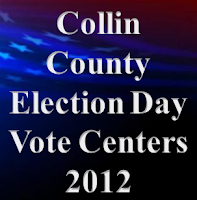Barack Obama won 60% of the vote among those younger than 30, down from 66% in 2008, says a
Pew Research Center survey of the 2012 youth vote. Nationwide, Obama received a blowout 66% of the national vote among the 18-29 year old age group in 2008 compared to McCain's 33% of that vote. Obama also won the 2008 youth vote in many Republican states like Texas, where he won 54% of the vote. Young voters also gave 63% of the vote to House Democrats in 2008 -- Young voters not only voted for Obama at the top of the ballot, they also voted down ballot or straight ticket by a high margin for other Democratic candidates.

The divide between young voters and older voters was as stark this
year as it was in 2008. While Obama lost ground among voters younger
than 30, he still won this age group by 24 points over Mitt Romney (60%
to 36%). He also maintained a slimmer advantage among voters 30 to 44
(52% Obama, 45% Romney), while losing ground among those 45 to 64 and
those 65 and older.
Among all voters 30 and older, Obama ran behind Mitt Romney (48% for
Obama, 50% for Romney). Four years ago, Obama edged John McCain, 50% to
49%, among all 30+ voters.
In Florida, Ohio, Virginia and Pennsylvania, Obama also failed to win
a majority of voters 30 and older. Yet he swept all four battleground
states, in part because he won majorities of 60% or more among young
voters.
Just as critically, young people made up as large a share of the
overall electorate as they did in 2008, according to the national exit
poll (19% in 2012, 18% in 2008).
As recently as September,
young voters were significantly less engaged in the campaign than they
had been four years earlier. But their interest and engagement levels
increased in the campaign’s final weeks.
In the Pew Research Center’s final pre-election survey,
as many registered voters under 30 said they were giving a lot of
thought to the election as did so in the last weekend of the 2008 race.
Young voters continue to identify with the Democratic Party at
relatively high levels and express more liberal attitudes on a range of
issues – from gay marriage to the role of the federal government – than
do older voters. In fact, voters under 30 were as likely to identify as
Democrats in the 2012 exit poll as they had been in 2008 (44% now, 45%
then). And they are the only age group in which a majority said that the
government should do more to solve problems.

His losses among young voters since 2008 might have been even greater,
but for the fact that the under 30s are by far the most racially and
ethnically diverse age group. Just 58% are white non-Hispanic, compared
with 76% of voters older than 30.
A recent report by Pew Social and Demographic Trends found that minorities are on track to become a majority of the overall population by 2050.
The racial and ethnic composition of young voters has shifted
dramatically over the last four presidential elections. Just 58% of
voters age 18-29 identified as white non-Hispanics, while 18% were Hispanic,
17% were African American and 7% identified as mixed-race or some other
race. The share of young voters who are white has declined 16 points
since 2000, when 74% of voters under 30 identified as white and 26%
identified as nonwhite (including 12% who were African American and 10%
Hispanic).
This stands in sharp contrast to older voters. Fully 76% of voters 30
and older were white, down only six points from 2000. Only 24% of
voters 30 and older were nonwhite, including 12% who identified as black
and 8% as Hispanic.
Read the full survey report @
Pew Research Center.
Related:
The Millennial Generation: Our Liberal Future



















